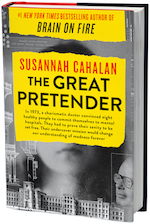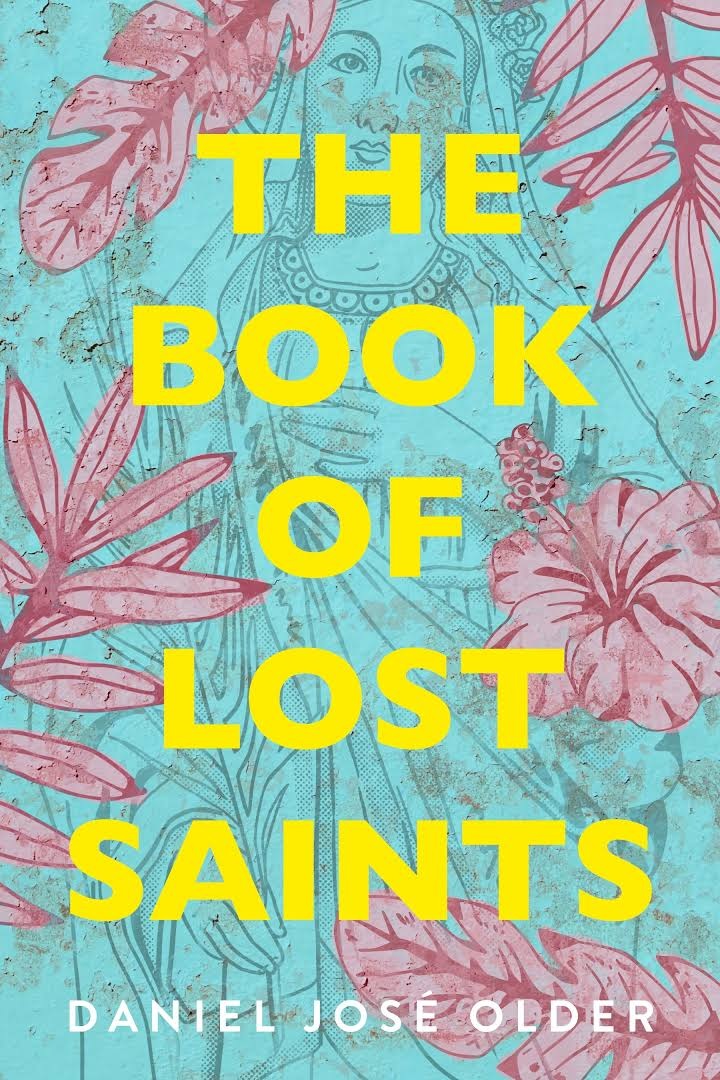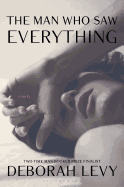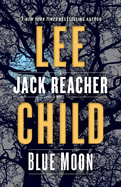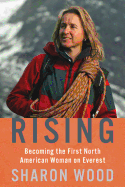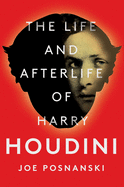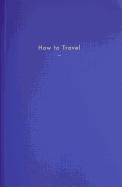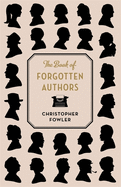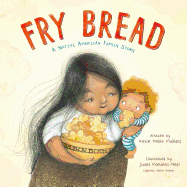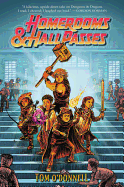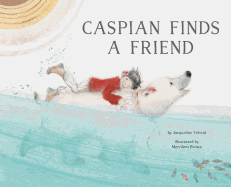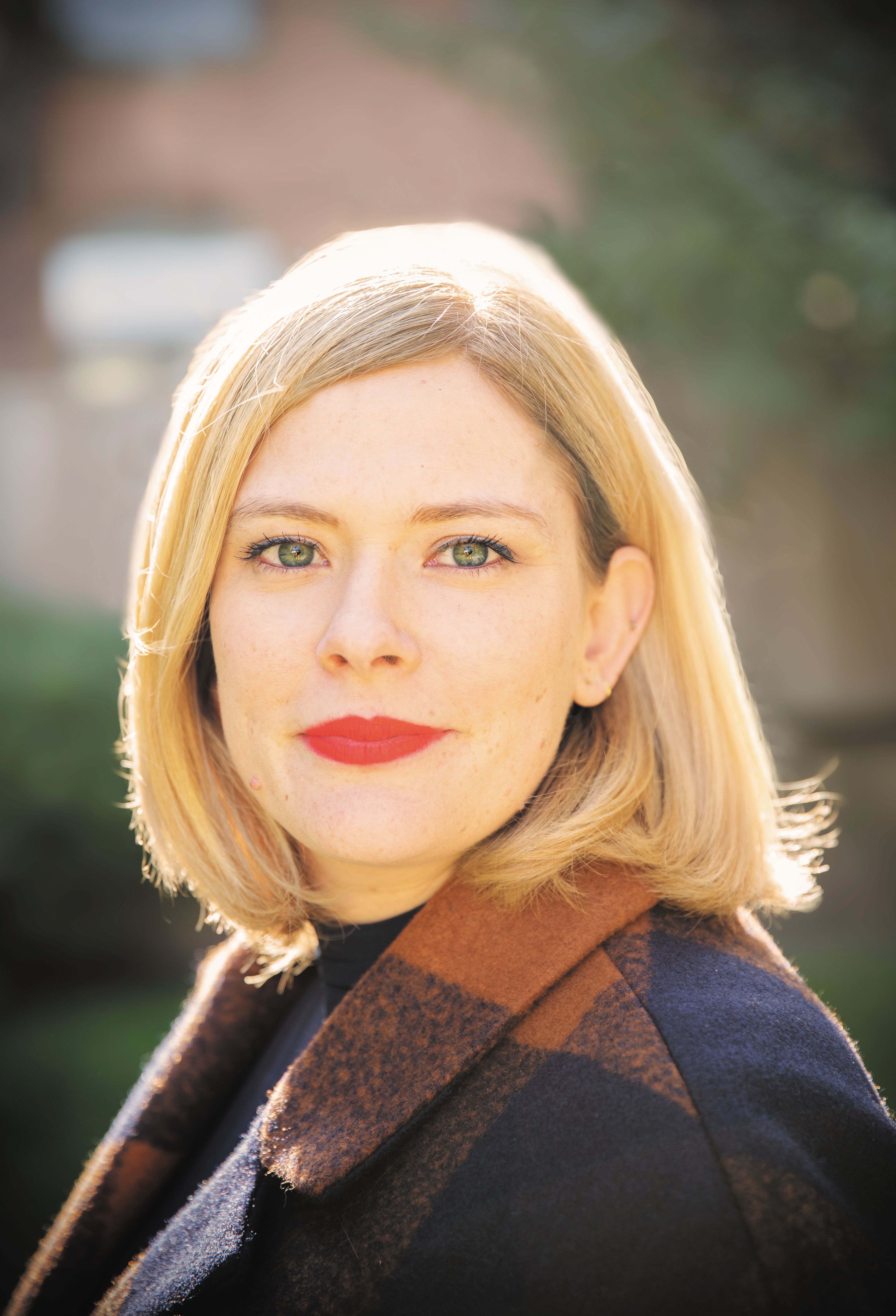 |
| photo: Shannon Taggart |
Journalist Susannah Cahalan (Brain on Fire) returns with The Great Pretender: The Undercover Mission That Changed Our Understanding of Madness (Grand Central Publishing), further unpacking how we (mis)understand mental health and why it matters. Cahalan is an award-winning journalist and author who lives in Brooklyn with her family.
As you yourself ask: Where is the divide between brain illness and mental illness, and why do we even try to differentiate between them at all?
I think we try to differentiate out of fear. There's fear of the mentally ill "other"; there's fear that we ourselves may not be as "sane" as we believe; there's fear of the unknown, or what causes mental illness. I think it comes down to this fact: none of us are immune.
Naming is so important. As diagnostic terminology grows, you write, psychiatrists can "provide a name for their patients' suffering, something I personally would argue is one of the most important things a doctor can do, even if a cure isn't in sight." What is so powerful, or empowering, about a name?
I experienced this with my diagnosis of autoimmune encephalitis. When my family got a name for my suffering--even when it was unclear if I would recover--they immediately felt a sense of relief. Names give us clarity and focus. Without them, we feel lost. Unnamed illnesses remind us how little we know, and that's the most frightening concept of all.
On the flip side, you also acknowledge the danger of labels.
It's so hard. We need the labels because they not only provide comfort, but help decide what if any treatment is necessary, prognosis, etc. Still, psychiatric labels, I found, are less objective than we like to believe and sometimes this leads us down paths that may not be right for us. I think clinicians can combat this by being open and honest about the limitations of these labels--that one person with one label might not have the same experience, outcome, etc. as another person with the same label.
Your note is so honest about preparing to speak to a crowd of psychiatrists: "When I had packed for the trip I made sure to bring my most adult, sophisticated, not crazy ensemble." Do you still find yourself dressing or comporting yourself in certain ways to project to others that you're "not crazy"?
Of course! I wrote a memoir about having experienced hallucinations and paranoid delusions and having exhibited violent, aggressive behavior, so I am eternally aware of how I come off to a crowd of strangers. This was especially true when Brain on Fire was first published. I felt I had to prove myself constantly and was certain that people were looking at me and asking themselves, "Is she really recovered?" This likely came out of insecurity, but it was my reality for a while. I believe this impulse is starting to self-correct, hopefully.
You deem Robert Spitzer's critique of Rosenhan's work "delicious in its biting bitchiness... the drollest piece of academic literature I've ever read." What kinds of humor have you encountered in the realm of mental health?
I'm so glad you picked up on the humor! I just love that paper (written by Rosenhan's rival and DSM-godfather Robert Spitzer). There is so much levity and wit in Rosenhan's writing, and he loved to engage with people with similar sensibilities. I laughed a lot while researching this book, considering how dark some of the subject matter was.
Your writing is consistently accessible and entertaining. A favorite line: "The impossibility of distinguishing sanity from insanity ha(s) received the most mainstream of honors--its own reality show." Speaking of reality shows and entertainment, how do you feel about current representations of mental illness in popular culture? What was the experience like of having your own story adapted into a film by Netflix?
First off, thank you so much for your comment about my writing. It was important to me to make it as enjoyable and exciting as possible, while also diving into difficult topics.
In terms of my views on the current representations of mental illness in popular culture, I'll just say it straight: most of it is total rubbish. People still don't really understand what schizophrenia is or the range of behaviors and symptoms associated with it. They think of people in horror movies with butcher knives stalking people. That's not serious mental illness, and it's infuriating to see it portrayed that way. I wrote a piece about my experience watching my own story be adapted, but I think it can be summed up in one word: surreal.
The argument that the Stanford psychologist whose work grounds this book is perhaps a "great pretender" himself is fascinating. Is a movie on him next?
I would love to see David Rosenhan on screen as the Great Pretender! There's nothing in the works just yet, but I think he is such a compelling unreliable narrator and you really could have some fun with him.
What do you hope people will do after reading your book? How do you hope they might think differently about mental health and its treatment?
There are so many specific things I hope this book will do--better understanding of the limitations of medicine, the role of context in diagnosis, the (often unfair) distinctions between "mental" and "physical" illnesses--but in general I hope it sparks a conversation that people might not have been inclined to take on before reading the book. There's a lot to debate in it, and I'm sure many people will not agree with this or that, but that's the goal, to get people talking about these issues.
Do you have a stack of books to read for pleasure outside of your research, or do those lines blur?
Well, I just had twins (they're four months as of this writing), so I've been a bit derelict with my reading. I can tell you, though, that there are some remarkable books coming down the pipeline (or already here) that I was fortunate to have read and blurbed before the twins turned my life upside down, among them: Karen Rinaldi's It’s Great to Suck at Something (which totally gave me the confidence to try running again with a post-pregnancy body), American Predator by Maureen Callahan (the scariest book I've ever read), The Ghosts of Eden Park by Karen Abbott (a sexy bootlegging murder mystery mixed with The Great Gatsby) and Ada Calhoun's Why We Can't Sleep (a deeply reassuring look at the new midlife crisis that women face).
And in terms of those lines blurring, yes! It was so fun to reread One Flew Over the Cuckoo's Nest, Erica Jong's Fear of Flying, Joan Didion's The White Album and Tom Wolfe's essays and Susana Kaysen's Girl, Interrupted. I had so much fun immersing myself in the work of that era.
What's next for you?
I've worked on this book for five years. Next up? A massage.
Finally, if sanity and insanity exist, how shall we know them?
Oh, to answer this one in a short paragraph--an impossible task! --Katie Weed
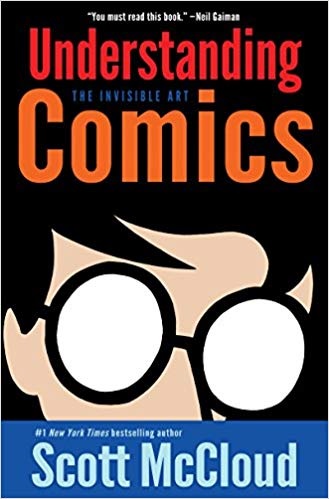 Pioneering cartoonist Will Eisner once described comics as a "sequential art." Expanding on Eisner's theories in Understanding Comics (Morrow, $24.99), Scott McCloud later defined the term as "juxtaposed pictorial and other images in deliberate sequence." The capacity for comics to control how readers experience time within a narrative is a key feature of the medium. In these recent releases, cartoonists take advantage of this feature to purposely distort how time is perceived.
Pioneering cartoonist Will Eisner once described comics as a "sequential art." Expanding on Eisner's theories in Understanding Comics (Morrow, $24.99), Scott McCloud later defined the term as "juxtaposed pictorial and other images in deliberate sequence." The capacity for comics to control how readers experience time within a narrative is a key feature of the medium. In these recent releases, cartoonists take advantage of this feature to purposely distort how time is perceived.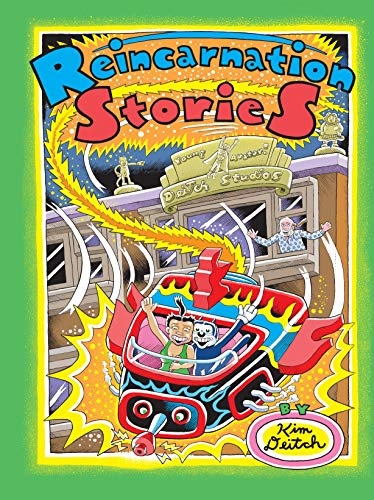 Reincarnation Stories (Fantagraphics, $29.99) is a joyful, labyrinthine, and profoundly strange journey through the cosmic history of creator Kim Deitch (The Boulevard of Broken Dreams). During a difficult recovery period following an eye surgery, Deitch plays memory games with himself to pass the time. He connects extraordinarily vivid childhood memories to near-hallucinations and past lives. Instead of using standard panels to organize his comics, Deitch uses full-page spreads, sometimes with multiple timelines occurring in one drawing. His recently operated-on eyeball hangs at the top of these frames like the sun, reminding readers of how strange the mechanism of memory truly is.
Reincarnation Stories (Fantagraphics, $29.99) is a joyful, labyrinthine, and profoundly strange journey through the cosmic history of creator Kim Deitch (The Boulevard of Broken Dreams). During a difficult recovery period following an eye surgery, Deitch plays memory games with himself to pass the time. He connects extraordinarily vivid childhood memories to near-hallucinations and past lives. Instead of using standard panels to organize his comics, Deitch uses full-page spreads, sometimes with multiple timelines occurring in one drawing. His recently operated-on eyeball hangs at the top of these frames like the sun, reminding readers of how strange the mechanism of memory truly is.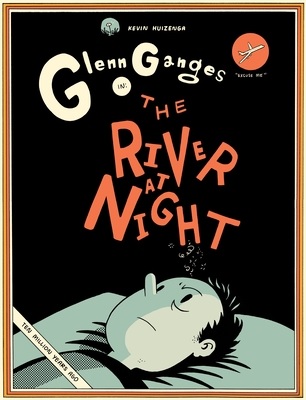 Kevin Huizenga's The River at Night (Drawn & Quarterly, $34.95) is the latest entry in his Glenn Ganges series. Although the book's subject matter varies, Huizenga threads through each of these stories his interest in how the transcendental enters into domestic life. Ganges follows the serpentine river of his thoughts into bizarre contingencies and strange narrative arcs. His insomnia-induced hallucinations appear in nighttime shades of blue and black across panels that continue after the physical page ends.
Kevin Huizenga's The River at Night (Drawn & Quarterly, $34.95) is the latest entry in his Glenn Ganges series. Although the book's subject matter varies, Huizenga threads through each of these stories his interest in how the transcendental enters into domestic life. Ganges follows the serpentine river of his thoughts into bizarre contingencies and strange narrative arcs. His insomnia-induced hallucinations appear in nighttime shades of blue and black across panels that continue after the physical page ends.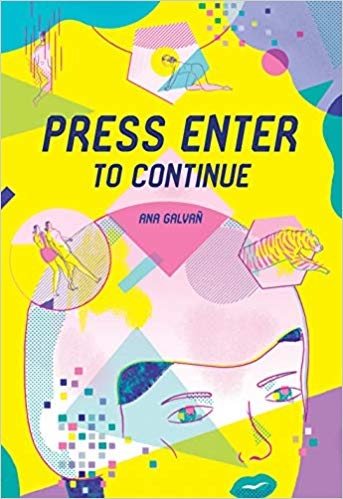 Much of Ana Galvañ's Press Enter to Continue (Fantagraphics, $19.99) is spare on words. Dynamic and otherworldly, Galvañ's multiple narratives unspool in neon colors across pages without demarcated panels. The most abstract of these three books, Press Enter confounds the boundaries of both comics and visual art to show a world where technology distorts both time and space.
Much of Ana Galvañ's Press Enter to Continue (Fantagraphics, $19.99) is spare on words. Dynamic and otherworldly, Galvañ's multiple narratives unspool in neon colors across pages without demarcated panels. The most abstract of these three books, Press Enter confounds the boundaries of both comics and visual art to show a world where technology distorts both time and space.


